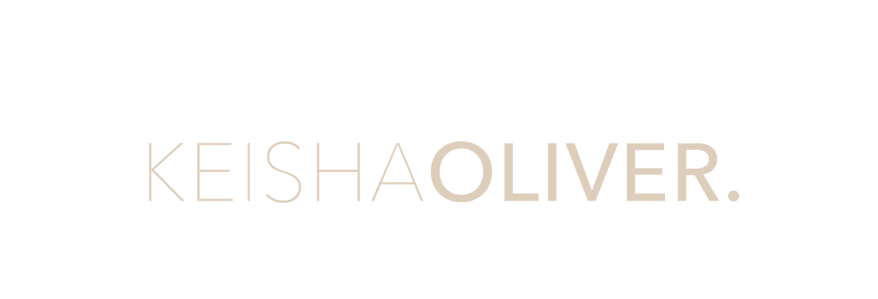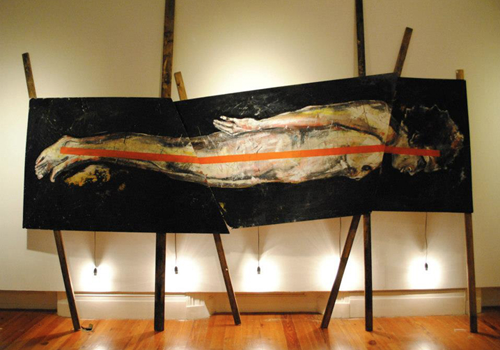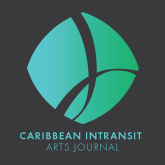Chief curator at the National Art Gallery of the Bahamas, John Cox,
recently sat down with me to discuss his curatorial strategies behind the newly
realized National Exhibition ‘Kingdom Come’. Cox explores his relationship to
the NAGB and his current engagement with local artists who have been included
in this year’s collection.
Keisha Oliver: In January of this year you took on the position as chief curator with a great deal of optimism. How have you found the past few months in this role?
John Cox: It has been a rewarding experience, with a lot of work involved,
which is a good thing. There definitely is this load that comes with the
position and in some regards I may have underestimated it. I’m very familiar
with the physical handling of the artwork so that aspect hasn’t been
intimidating. The longer I’m in the position the more I begin to understand the
gravity of the responsibility that I have. In a conversation with Heino Schmid,
one of the NE6 artists, we discussed a way to measure how well you’ve done with
a show like NE6 by the increasing numbers of people (particularly artists) who
right you off at the end of it.
John Beadle - Mobile Housing Scheme -Mixed media/Various dimensions 2012. Image courtesy of The National Art Gallery of The Bahamas.
KO: Having worked with
the NAGB previously as a curator and education officer would you say the ethos
of the NAGB and dynamics of your role is much different?
JC: The team and the dynamics of the roles were very different before.
Just under a year ago there was a team that had been put in place by the former
NAGB Director Erica James, but no leaders had been appointed. In returning I
was very careful, as I didn’t want to be the guy that is kind of in charge, but
stepping on toes, disregarding policies that were already put in place. I
wanted to feel it out and gain the respect and trust of my curatorial staff.
This time around has been very different and the evolution of the process has
been slower, but I feel that with this exhibition I needed my team to really
step into gear and I feel they did well because it can be a complicated
process.
During my first role at the NAGB I really didn’t have anything to do from
a curatorial perspective, it was all really educational projects. The roles
weren’t as compartmentalized as they are now, back then you pretty much had to
do everything.
KO: You have expressed that you believed “the new NAGB team could leverage the institution in the future to engage in local, regional and international conversations around contemporary visual practice in ways the country has not yet experienced”. Do you feel Kingdom Come is the beginning of introducing The Bahamas to this new experience?
KO: You have expressed that you believed “the new NAGB team could leverage the institution in the future to engage in local, regional and international conversations around contemporary visual practice in ways the country has not yet experienced”. Do you feel Kingdom Come is the beginning of introducing The Bahamas to this new experience?
JC: Yes I do. I don’t think that Kingdom Come can take the credit solely,
but I think it’s a major part of it. I think a part of how we begin to advance
ourselves is to introduce and re-introduce contemporary practice to our local
community. In putting together Kingdom Come most of the participating artists
have all this experience in working in this language so it’s not like I am
encouraging them to do things that they wouldn’t normally do. I think a show
like Kingdom Come and the NAGB’s past National Exhibitions have pushed the
envelope. That’s what I think this show should be doing, it should be cutting-edge.
I feel it is a relevant show and there is an important role and responsibility where
I have to purpose specific shows with specific agendas. Kingdom Come is about
the future.
Whilst on the NAGB’s Blank Canvas radio show recently I was discussing
with Amanda Coulson the NAGB Director about balancing the various spaces within
the gallery. Kingdom Come is so contemporary in contrast to some of the other
things that people understand. It is about balance, and the thing is there are
more young people in art school getting art related degrees than there were 40
years ago, and the types of practices they are being exposed to and engaging
with are new practices. They are not engaging with egg tempera painting. As
beautiful as it is the reality is that they are not doing it and their language
is moving forward. We need to move with the shift and create opportunities for
people that coincide with this shift, because a lot of this work is pretty
difficult work to sell. Unless you had a really good reason to do this work why
would you do it? My job is to create a reason for artists to be innovative,
creative and individual in their practice.
KO: Do you feel any
previous NAGB National Exhibition has been able to engage regional and
international conversations?
JC: I don’t think so. The reason behind that is we haven’t really
promoted or presented the exhibitions in a way that increases exposure beyond
the Bahamas. That’s why I’m very excited about our connections with
organisations like ARC magazine. Also, the emergence of the facebook culture of
the last 3-5 years has become a pretty central mechanism for a lot of people
and it makes what we do so much more visible and accessible.
One of the disappointments I have with putting together a show like this
is sometimes you get the feeling the artists just don’t really take it
seriously. I think that people in the creative community fail to recognize the
potential scope that opportunities like this have. Like if this show is a
successful show in that it has a strong body of work or an interesting context
there is no reason why curators in the region or other parts of the world
couldn’t review it. That’s my goal. I don’t want to stop working on the opening
and say well I’m just going to sit back and wait for the next opening, but I
think we should be promoting even more while the show is up.
L-R Dede Brown 'Chaos is the Law of
Nature... - Mixed Media / Various dimensions 2012, Kendal Hanna 'Shock of
Kingdom Come' - Acrylic on Canvas / 12.5' x 10.5' 2012 & Sue Katz 'Cycle' -
Mixed Media - Various dimensions 2012. Image courtesy of the National Art Gallery
of the Bahamas.
KO: How would you
introduce the concept of the show to someone who isn’t typically concerned with
the arts?
JC: The first thing I wouldn’t do would use the word ‘apocalypse’. The
past few months I’ve learned that that is not a good way to start a
conversation. I would describe it as giving artists an opportunity to respond
to the challenges of change in modern times. I think that everyone can identify
with that if they give it just a little bit of thought. There is this
discomfort we have with so many things going on in our society and I feel this
exhibition is an opportunity for artists to address some of these conditions.
KO: You have referenced
sociologist Carl Jung and mythologist John Campbell during the promotion of
NE6. Are there any contemporary artists or recent exhibitions that you have
drawn inspiration from when planning the show?
JC: There was an essay that was written by contemporary American painter
Julian Schnabel that I came across in Hi-Fructose magazine and I made reference
to in the invitation to the artists. The essay discusses multiple apocalypses
in a person’s life and having to realign one’s life several times based on
significant events that would force them to reevaluate their situation in a
meaningful way. Also, the lectures and presentations by American scholar Joseph
Campbell have been a key reference. For the last 15 years I have been a fan of
Campbell. He often has an interesting perspective on religion and mythology and
the roles we play in society. I feel those kinds of things really drove what I
thought could be the basis of a strong show.
Heino Schmid ‘This is Remembering’ -
Mixed media on wood - 2012. Image courtesy of the National Art Gallery of the
Bahamas.
KO: The choice to change
the direction of the National Exhibition to invitation only invited both
criticism and praise from the local art community. Given the large numbers of
artists living in The Bahamas what criteria helped you fine-tune your selection
to the 48 participating artists.
JC: I think that what makes an artist an artist is beyond talent and
vision, it’s initiative. Which sets of people are actually going to do
something unprompted. So the first thing I thought was usually the National
Exhibitions happen every two years, which naturally started to fit the format
of a biennial like the Whitney Biennial and Venice Biennial. Amanda and I
agreed that those exhibitions are actually invitation only. I thought this
would be a good approach because curating an open call is a little challenging,
its like you are dis-empowered as a curator. You’re in a position where you don’t
know what you will receive because the works may be all over the place and then
you're presented with the job of threading them back together. It is a little
vague in the sense that so many artists work in different ways, with different
measuring sticks in assessing what they do that it makes it difficult to put
all the categories of creativity in one box.
The bigger issue is you’re always having to reject people, those whose
work isn’t selected for the show often creates a fallout that sometimes is irreversible.
For example, you may have artists who would put the NAGB on their black list
for years because they didn’t get into one of the shows and I feel that is
unfortunate. The original jurors who were here for the first five National
Exhibitions really did have a subconscious agenda with what they were looking
for. They mostly wanted to include the strongest collection of new work that
was no more than two years old. We would have really brilliant artists
submitting works, but it was the same brilliance that the artist had discovered
15 years ago.
The new direction of the invite gave us more curatorial control in a way
that we could enter the conversation and with the artist in assisting them with
the development of their concepts, whilst still allowing them complete creative
freedom. This allowed for a better selection process. Using a garden as a
metaphor where we picked the corners of the garden selecting where we wanted
the art to come from so when the work flourished the garden would be full. Opposed
to having pockets of over population and then dried out areas where no
photographers are represented or no ceramicists are represented.
In short, the open call is sometimes like inviting someone to a party and
then saying you can’t come in, whereas I feel it’s better to say we’re having a
party, but we want you to wear a polka dot outfit. This way you’re giving the
artist a choice.
Yutavia George Journey - Mixed Media -
Various dimensions 2012. Image courtesy of John Cox
KO: Who is your
favorite hero of fiction?
JC: Robert Duvall from Apocalypse Now
KO: What is your motto?
JC: Anything with the word ‘epic’.
KO: What is your
greatest fear?
JC: Something happening to my children.
KO: During your
promotion of the NE6 these three questions were put forward to the public. Can
you elaborate on how they relate to Kingdom Come?
JC: I tried to approach the show like a project. Being a practicing
artist I feel that the next best thing from actually having someone else be the
curator and inviting me to the show would be to have some kind of creative
process play a part in the construction of the show. The reason we chose those
questions was because in the beginning the word apocalypse kept coming up and
people didn’t seem to respond too well to it. So we decided that we needed to
lighten it somehow.
I think it is unfair that we always ask artists to write so much because
in an essence that is why they are creating the visual work. They are not
writers, if so they’d just write a novel and wouldn’t have to paint anything.
We decided this was a way to first lighten the theme in a way that it would
have the sensibility that would really give the viewer some insight into the
psyche of the artist. This also provided an easier way for the artist to
respond opposed to presenting a thousand word essay of their work. Initially
there may have been 25 questions for us to choose from. We choose the motto
question because in a way it represents a person’s life philosophy, and
presented a relevant contrast to the question on fear. I feel a individual's motto
is often lined up in a way where it seems it is needed to overcome challenges,
adverse scenarios, and ultimately one's fears. These two questions definitely
balanced each other out.
I found the hero question most interesting because it brings me back to
Joseph Campbell and how he played a central part in the way the show was
constructed where he talks about how wonderful it is that we can make believe.
Like how little girls make believe they are princesses and boys are
superheroes. He expressed that it is so wonderful and playful, but also so
necessary and as you get older that framework of mythology and projected
non-reality becomes your religious situation. He’s a little controversial in
that he doesn’t believe literally that most of the things in religion ever
actually happened, but maintains they are very important. It is like saying to
the little girl you’re not really a princess and realizing what that actually
does to her. For many this realisation may crush one's ability to get outside
of their body.
Kendra Frurop- Duran Duran - Mixed
Media - 6' x 40" each 2011 & l A Constant Interna Smile - Mixed media
/ Various Dimensions 2011. Image courtesy of the National Art Gallery of the
Bahamas.
KO: In lieu of portraits
a series of open palms of the participating artists is used on promotional
material. For some the open palm may be perceived as a welcoming symbol. What
was your purpose for using it and what has been the public’s response thus far?
JC: I thought it would be good to get away from using faces. I feel there
is something a little more honest about your hands. They are usually where the
creative process begins and are very much rooted in the work. I hadn’t even
really thought of it as a welcoming symbol, but it is and there’s something
about the potential unity of hands where they almost seem like a collaborative.
The concept has seemed to have really worked well. Somehow people are really
tied into the conversation surrounding the meaning of the hands, which makes me
feel it was a good decision.
KO: In the NE6 press
release you expressed, “Now is the time for the NAGB to help shift the gallery
into the global spotlight, beginning with what is sure to be a powerful
dialogue.” What sorts of conversations have developed so far leading up to the
opening? What conversations do you hope will follow?
JC: The Minister of Youth, Sports & Culture the Hon. Daniel Johnson
has been involved in this campaign, and he has seemed genuinely engaged showing
a lot of interest in the creative industry in The Bahamas. He was concerned
with learning what the core energy was that caused this work to develop and why
artists would want to be involved even though it wasn’t salable and what kind
of credibility could come along with it.
I feel that those
conversations are coming. A major part of my job is to some degree to pull
together artists that I already feel are talented and to give them an
opportunity to exhibit their creativity, which is relatively easy. I want to
challenge myself now to see how I can get this show to be more visible now that
its up. I would like to use ongoing connections with magazines like ARC and new
relationships with curators like Paco Barragan who I recently met at the Aruba
Linked/Caribbean Linked symposium to help push the dialogue beyond The Bahamas
and establish a dialogue within the region.
Article originally published in ARC Magazine.
Article originally published in ARC Magazine.
- Comments Off • Category: Arc Magazine, Art, Bahamas, John Cox, Kingdom Come, National Art Gallery of The Bahamas, National Exhibition
- Share on Twitter, Facebook, Delicious, Digg, Reddit
The National Art Gallery of The Bahamas is pleased to announce the opening of its sixth national biennial exhibition, the NE6, entitled "Kingdom Come" on Thursday, November 15th, 2012. The show is held under the patronage of Dr. Daniel Johnson, Minister of Youth, Sports and Culture, who will open it to the general public at 7pm. As the latest installation of the National Exhibition series, this group show features work by myself and 47 other artists living and working in The Bahamas today.
Read more about the exhibition via ARC Magazine:
I hope to see you there!
- Comments Off • Category: Arc Magazine, Art, Bahamas, Exhibition, Keisha Oliver, Kingdom Come, National Art Gallery of The Bahamas, NE6
- Share on Twitter, Facebook, Delicious, Digg, Reddit







.jpg)


